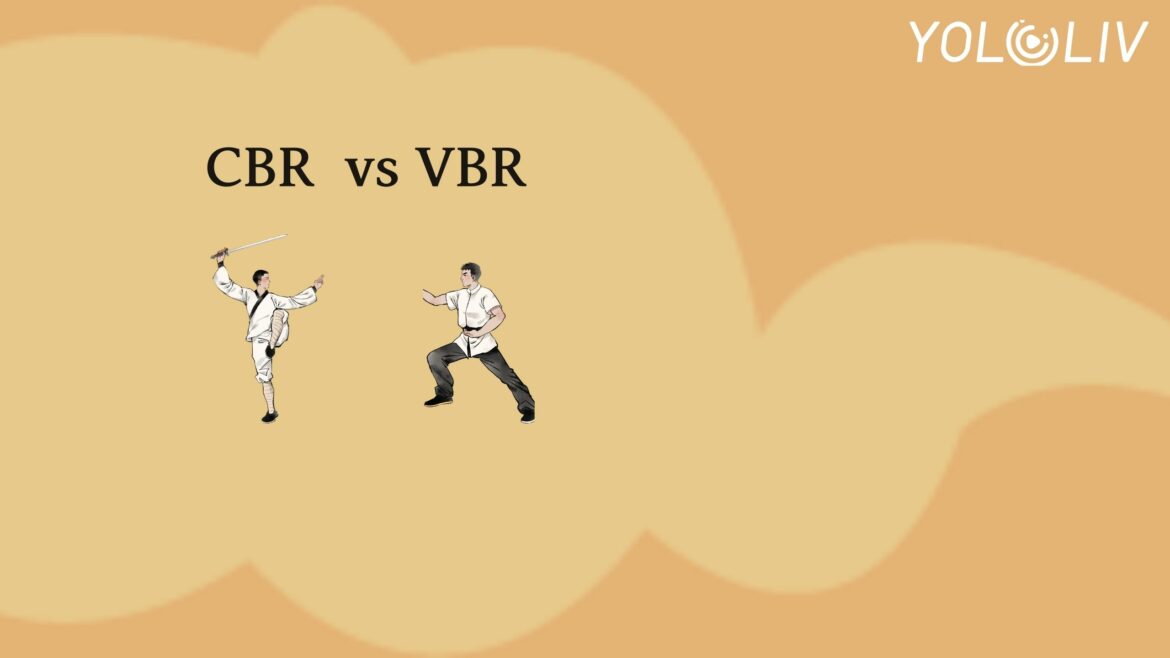Explore the differences between Constant Bitrate (CBR) and Variable Bitrate (VBR) in video encoding. Learn how CBR provides consistent bitrate but may result in lower video quality, while VBR allows for more efficient bitrate allocation. Make an informed decision for your video encoding needs.

Understanding CBR and VBR
When it comes to video encoding, two common methods are Constant Bit Rate (CBR) and Variable Bit Rate (VBR). These methods determine how video data is compressed and transmitted, and they have their own strengths and weaknesses. In this article, we will delve into the details of CBR and VBR, their key differences, pros and cons, and how they affect video quality. We will also discuss factors to consider when choosing between CBR and VBR for your video encoding needs.
Key Differences between CBR and VBR
CBR stands for Constant Bit Rate, which means that the encoded video has a fixed bit rate throughout its duration. This means that the same amount of data is transmitted per second, regardless of the complexity of the video content. On the other hand, VBR stands for Variable Bit Rate, which means that the encoded video has a varying bit rate that changes depending on the complexity of the video content. VBR allows for more flexibility in allocating bits to different parts of the video, depending on their complexity.
The main difference between CBR and VBR is the way they handle bitrate allocation. CBR allocates a fixed amount of bits for each second of video, which may result in higher bitrates for simple scenes and lower bitrates for complex scenes. VBR, on the other hand, dynamically allocates more bits for complex scenes and fewer bits for simple scenes, resulting in more efficient compression and potentially better video quality.

Pros and Cons of CBR
CBR has its own advantages and disadvantages. One of the main advantages of CBR is its predictable and consistent bitrate, which makes it ideal for applications with strict bandwidth requirements, such as live streaming or video conferencing. CBR also ensures that the video quality remains relatively constant throughout the entire duration of the video, as the bitrate remains fixed.
However, CBR also has its limitations. Since it allocates a fixed amount of bits for each second of video, it may result in inefficient compression for videos with varying complexity. In scenes with high motion or complex details, the fixed bitrate may not be sufficient, resulting in a loss of video quality. Additionally, CBR may result in wasted bits for scenes with low complexity, leading to larger file sizes.
How CBR and VBR Affect Video Quality
The choice between CBR and VBR can significantly impact the quality of the encoded video. CBR, with its fixed bitrate, may result in consistent but potentially lower video quality in scenes with high motion or complexity. On the other hand, VBR, with its dynamic bitrate allocation, can achieve better video quality by allocating more bits for complex scenes and fewer bits for simple scenes.
In CBR, if the fixed bitrate is set too low, it may result in compression artifacts, pixelation, or other visual distortions in scenes with high motion or complexity. On the other hand, if the fixed bitrate is set too high, it may result in wasted bits and larger file sizes for scenes with low complexity, which can affect storage and bandwidth requirements.
In contrast, VBR allows for more efficient bitrate allocation based on the complexity of the video content. This can result in better video quality in scenes with high motion or complexity, as more bits can be allocated to accurately capture the details. VBR also allows for lower bitrates in scenes with low complexity, resulting in smaller file sizes and more efficient compression.
Choosing between CBR and VBR
The choice between CBR and VBR depends on the specific requirements and constraints of the video encoding application. Here are some factors to consider when making the decision:
- Bandwidth Requirements: If the video needs to be streamed over a network with limited bandwidth, CBR may be a more suitable choice as it provides a consistent bitrate that can help ensure smooth playback without buffering. However, if bandwidth is not a constraint, VBR may be preferred for its potential to achieve better video quality.
- Video Content Complexity: If the video content has varying complexity, such as scenes with high motion or detail, VBR may be a better choice as it can dynamically allocate more bits to capture the details accurately. CBR, with its fixed bitrate, may result in lower video quality in such scenes.
- Storage Requirements: If storage space is a concern, VBR may be preferred as it can achieve more efficient compression by allocating fewer bits to scenes with low complexity. CBR, with its fixed bitrate, may result in larger file sizes, especially for videos with varying complexity.
- Playback Device Compatibility: Some playback devices or platforms may have specific requirements for video encoding, and CBR or VBR may be recommended or required. It’s important to consider the compatibility of the encoded video with the intended playback devices or platforms.
- Application Requirements: The specific requirements of the video encoding application, such as live streaming, video conferencing, or archival storage, should also be considered when choosing between CBR and VBR. Factors such as real-time encoding, latency, or archival preservation may impact the choice of encoding method.
Conclusion
In conclusion, CBR and VBR are two common methods of video encoding with their own strengths and weaknesses. CBR provides a consistent bitrate but may result in lower video quality in scenes with high motion or complexity, while VBR allows for more efficient bitrate allocation but may have variable bitrate fluctuations. The choice between CBR and VBR depends on various factors such as bandwidth requirements, video content complexity, storage requirements, playback device compatibility, and application requirements.
Considering the specific requirements and constraints of the video encoding application is crucial in making an informed decision. It’s important to evaluate the trade-offs between CBR and VBR and choose the method that best suits the needs of the specific video encoding application. YoloCast, the go-to live streaming platform that gives you more control than
ever to deliver professional live videos and engage your audiences.
44,499 total views, 99 views today

Aura, the marketing specialist at YoloLiv. With her extensive work experience and motivated work attitude, she continually encourages user issue solutions and feature request fulfillment in order to satisfy the demands of more people.


